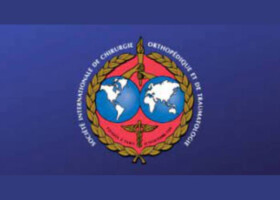
Authors:
Gunnar Jensen & Peter J. Millett & Dimitri S. Tahal & Mireille Al Ibadi &
Helmut Lill & Jan Christoph Katthagen
Abstract:
Injuries of the acromioclavicular (AC) joint are among the most common injuries of the shoulder girdle with an estimated incidence of 1.8 per 1000 per year. The male-female ratio is as high as 8.5:1 and more than half of all AC joint injuries occur in individuals between the ages of 20 and 39 years, mainly during sport activities. Accordingly, 30% of all shoulder injuries in the NFL are AC joint injuries, with an incidence of 2.6/1000 athletes per year. AC joint injuries are typically classified according to Rockwood. More recently, the ISAKOS upper extremity committee introduced a new sub-classification of Rockwood grade III injuries into grade IIIA (horizontally stable) and IIIB (horizontally unstable). Present controversy concerning the treatment of Rockwood grade III injuries may possibly be solved with use of this sub-classification. Evidence in the literature suggests that Rockwood grades I, II, and IIIA injuries can usually be treated non-operatively whereas Rockwood grades IIIB, IV, V, and VI injuries are typically treated with surgical reconstruction.
Many authours classify the first 21 days after an AC joint injury as the acute injury phase, with symptoms persisting for more than three weeks being classified as chronic. If surgical treatment is performed acutely, some surgeons prefer AC joint stabilization without additional graft augmentation and, in such instances, rely on the healing of the original coracoclavicular (CC) and AC ligaments. While the use of an additional allo- or autograft augmentation is done by some for acute injuries graft use is clearly recommended for surgical stabilization performed more than three weeks after the injury (chronic AC joint injuries). Addressing both the CC and AC ligaments may be important to restore horizontal as well as vertical AC joint stability, independent of the duration between injury and surgical treatment.
The prevalence of concomitant glenohumeral pathologies (CGP) associated with surgically treated AC joint injuries has been described to lie somewhere between 15 and 43%, and several authors have emphasized glenohumeral arthroscopy prior to AC joint stabilization. Most studies with evaluation of CGP have focused on acute AC joint injuries, and some evidence suggests that concomitant lesions may be more common in higher grade injuries. Arrigoni found a significantly higher rate of CGP for older versus younger patients with the cutoff age arbitrarily set at 45 years. Furthermore, the authors observed more CGP in patients with chronic injuries (41%) compared to patients with acute injuries (23%) but this difference was not statistically significant. Despite these previous observations, the probability of missing a CGP if AC joint stabilization surgery is performed without glenohumeral arthroscopy remains unclear for individual patients.
The purpose of this study was to identify the risk of con-comitant glenohumeral pathologies with acromioclavicular joint injuries grade III and V. We hypothesized that CGP would be more common in patients with grade V injuries compared to patients with grade III injuries. It was furthermore hypothesized that CGP would be more common in patients with chronic versus acute AC joint injuries, and that the probability of CGP would be associated with increasing age.
For the complete study: Concomitant glenohumeral pathologies associated with acute and chronic grade III and grade V acromioclavicular joint injuries
